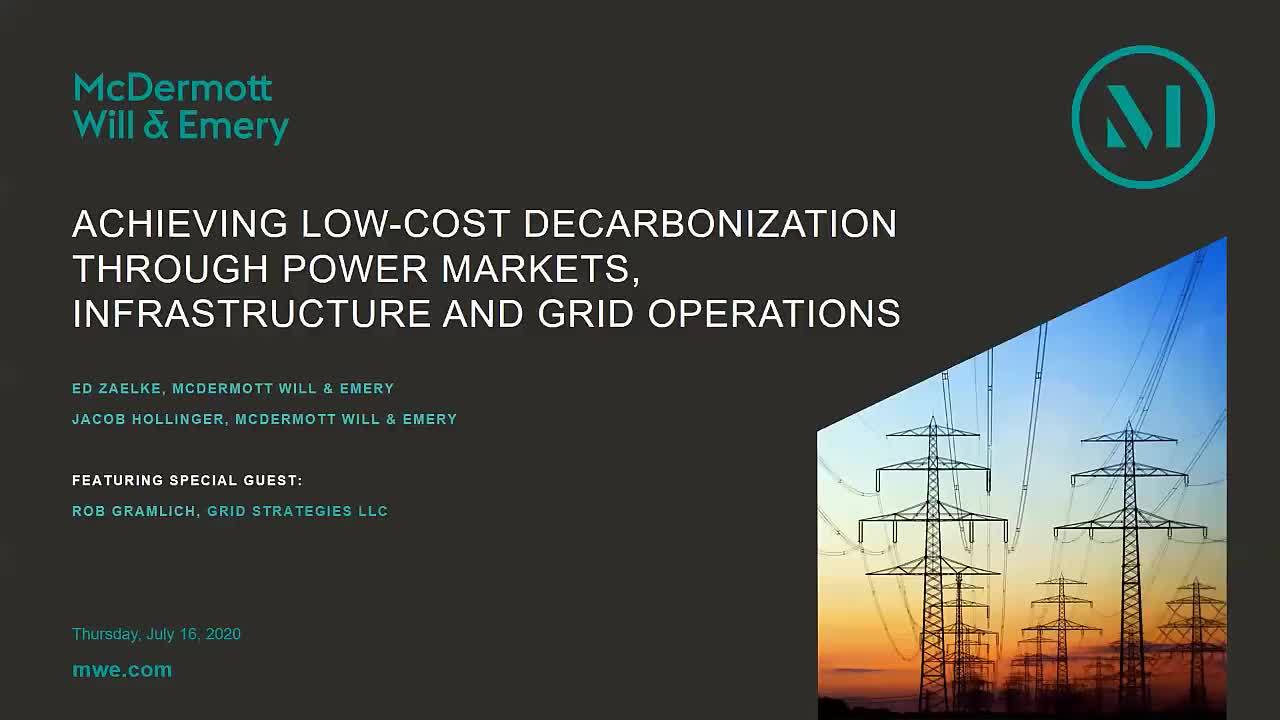
McDermott hosted Rob Gramlich, Founder and President of Grid Strategies, LLC, on July 16 for a discussion of low-cost decarbonization strategies for the electricity sector. We framed the discussion around 2020 US Presidential Candidate Joe Biden’s recently announced goal of getting to zero carbon emissions from the electricity grid by 2035.
Here are three takeaways from our conversation:
1. Three Areas of Change. Rob highlighted three areas where improvements can be made to substantially increase the deployment of wind and solar resources: Power markets, grid infrastructure and grid operations. With respect to power markets, Rob emphasized that regional transmission organizations (RTOs) can play a bigger role in achieving very fast dispatch over large geographic areas. With respect to infrastructure, he emphasized that new transmission lines will be required to reach the best wind and solar resources, but also that many of those new lines can be built on existing rights-of-way. And with respect to grid operations, he emphasized that there are technologies and operating practices that can help us improve the efficiency of the grid.
2. Flexible FERC. Rob suggested that under a new Democratic administration, FERC would likely prioritize flexibility in pricing design and in FERC’s interactions with states. He emphasized the importance of a flexible design for the pricing of “capacity” services and suggested that a Biden administration would likely be supportive of state level efforts to promote renewable energy.
3. Transmission Costs vs. Electricity Costs. Rob suggested that over the next ten years transmission costs will become a greater share of the overall cost of electricity, but that building out transmission would help bring that overall cost down.
read more

 Subscribe
Subscribe
